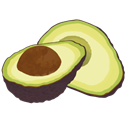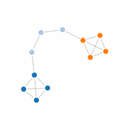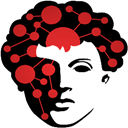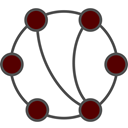RedisGraph Alternatives: Exploring Top Graph Database Solutions
RedisGraph, a property graph database module for Redis, has gained recognition for its high performance, achieved through the innovative use of linear algebra on sparse adjacency matrices. It supports OpenCypher queries and is available under a permissive license. However, for various reasons—whether it's specific feature requirements, platform preferences, or a desire to explore different architectural approaches—developers often seek robust RedisGraph alternative options. This article delves into some of the best alternatives available, helping you find the perfect fit for your graph database needs.
Top RedisGraph Alternatives
If you're looking to expand your horizons beyond RedisGraph, a multitude of powerful and versatile graph database solutions exist, each offering unique strengths. From mature, feature-rich platforms to specialized tools for specific use cases, these alternatives provide compelling options for managing and querying complex relationships in your data.

neo4j
Neo4j stands out as a high-performance graph engine, offering the robust features of a mature database. It's an excellent open-source RedisGraph alternative, available on Free, Mac, Windows, and Linux platforms. Its focus on object-oriented programming for graph interactions makes it a popular choice for developers, specializing in powerful graph operations.

Wikibase
Wikibase, the software powering Wikidata, is a versatile open-source platform for collaborative editing of structured data. As a Free, Open Source solution compatible with Mac, Windows, Linux, and MediaWiki, it serves as a viable RedisGraph alternative, especially for projects requiring a collaborative graph database and wiki functionalities.

ArangoDB
ArangoDB is an open-source NoSQL database that offers a flexible data model supporting documents, graphs, and key-values. This makes it a strong RedisGraph alternative for building high-performance applications. It's Free and Open Source, available across Mac, Windows, and Linux, and excels as a versatile graph database and general-purpose database.

Orient DB
Orient DB is a powerful Document-Graph database that supports both SQL and Native Queries, alongside asynchronous commands and more. As a Free, Open Source RedisGraph alternative, it's compatible with Mac, Windows, and Linux, and offers robust database and graph capabilities, with support for Java, PHP, and Python.

NetworkX
NetworkX is a Python language software package specifically designed for the creation, manipulation, and study of complex networks. It's a Free, Open Source RedisGraph alternative that runs on Windows and Linux, and is particularly strong in drawing and general graph functionalities, making it ideal for Python-centric projects.

Titan Database
Titan is a scalable graph database optimized for storing and querying massive graphs, designed to distribute across multiple machines. As a Free, Open Source RedisGraph alternative, it's available on Mac, Windows, and Linux, and offers strong features in Business Intelligence, Developer Tools, and both Graph and Relational database capabilities.

graph-tool
Graph-tool is an efficient Python module tailored for the manipulation and statistical analysis of graphs and networks. This Free, Open Source RedisGraph alternative is available for Mac and Linux, and is particularly useful for projects involving extensive graph analysis, machine learning applications, and Python-based graph operations.

GraphStack.io
GraphStack™ refers to Neo4j Enterprise open-source distributions, compiled and packaged by the Graphstack.io Team. As a Free, Open Source RedisGraph alternative, it's available on Mac, Windows, Linux, and BSD, offering the robust features of a professional graph database solution, making it a strong contender for enterprise-level graph applications.
The world of graph databases offers a rich landscape of tools beyond RedisGraph. Each alternative presented here brings its own set of strengths, catering to different project requirements, scales, and developer preferences. We encourage you to explore these options further, evaluate their features, and determine which one best aligns with your specific needs for building powerful and efficient graph-driven applications.